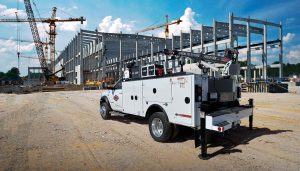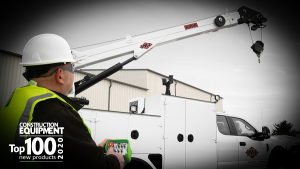
Weighing Risk, Reward and Reliability
August 16, 2018When it comes to taking risks, many companies prefer not to — not so at Peed Equipment Co. Since its founding in 1982, the leadership at Peed Equipment Co. has said “yes” to calculated risk, opening themselves up to new experiences and continued growth opportunities.
The rental equipment company in Perris, California, was built on the foundation of the late Dennis Peed’s hard work, growing over time from a small outfit to a well-known and respected name in the industry. But when the recession hit, the company, now managed by Peed’s son, David Peed, knew they could either wait it out, or find new ways to grow. “We had a tremendous amount of growth during the recession —equipment prices were cheap and although many people weren’t buying at the time, we took the risk and put our capital into equipment,” said David Peed, general manager, Peed Equipment Co. “We took the chance, and it’s paid off.”
As the economy bounced back and Peed continued to steadily grow his father’s legacy, the company started securing jobs across the nation. “We chase the work, it doesn’t matter where it is,” said Peed. “We’ve been to Florida, Canada, and Mexico to work on both mining and construction sites.”
In 2014, Peed carefully weighed another opportunity and invested in Caterpillar 777 Off-Highway trucks. While the trucks are typically used in open-pit mining applications, Peed had other plans. “The investment started off a little shaky, and the trucks sat for a year because we didn’t have any suitable jobs,” said Peed. “But then we started using them on our construction sites, and the trucks proved to be a great investment.” While the process of getting them to the job destination can be challenging — think midnight highway police escorts across southern California — the trucks’ utility on-site is a true advantage to Peed and his operators, making the investment yet another calculated risk Peed can count as a success.
Know when to hold ‘em
Years of bold decision-making taught Peed and his team a thing or two, specifically when to jump at an opportunity and when to stick with what you know. So, when his team reported that the telescopic IMT cranes used to perform rigorous field engine repairs and replacements on their fleet of Caterpillar 657 scrapers weren’t keeping up, Peed took stock of his options.
With about 12 trucks running at any given time, the Peed mechanics team relies heavily on the service vehicles to complete job site repairs and keep dirt moving. “We’ve predominantly always ran IMT trucks and cranes,” said Peed. “We know we can reach out to IMT any day of the week and get superior service and parts, which is huge for us.” So instead of looking to a different manufacturer to avoid performance issues, Peed went back to IMT for a solution.
“When you get things lifted up in the air with telescopic cranes, it can get a little shaky sometimes,” said Peed. “We weren’t completely satisfied with the lifting capacities for our scraper applications, and so we reached out to IMT and our distributor, Lodi Equipment, and told them ‘we need a better product.’ They were more than happy to listen and work to perfect the crane.”
Building a better crane
IMT, in partnership with Lodi Equipment, sent a team of engineers to one of Peed’s job sites to gain a better understanding of what was working and what needed to be tweaked on the telescopic cranes. “We created mockups and spent a lot of time talking with the team to ensure the crane would lift properly,” said Peed. The engineers took measurements of the crane at every point of the lifts when working on the scrapers, shedding light on its specific shortcomings and necessary improvements.
The IMT team went back to the drawing board with the insight learned on the job site to redesign the crane with better lifting capabilities — creating the updated IMT 12000 Telescopic Crane. With increased capacity, Penta Boom™ design, -10 to +80-degree boom angles and a new position on the back of the truck, “there’s no limitations with the new crane,” said Peed. “You can do everything — front to back — on the scraper without hitting the overloads. Everyone agreed on the idea of pulling the crane back on the truck and shortening the bumper, which really helped with the capacity. It’s a solid crane.”
From the mouths of mechanics
In this instance, choosing stability over the risk of a new manufacturer meant Peed and his team ended up with a new crane design touting increased reliability and reduced total cost of ownership. “Instead of having to double boom or call out an outside crane company to come and help with some of our work, we only need one mechanic equipped with the IMT Dominator and the 12000 Telescopic Crane,” said Peed. “It’s a huge savings for us and has made it more cost-effective to own and operate the newer IMT cranes and trucks.”
But the real proof that choosing to stick with IMT is paying off comes straight from the field. “Mechanics are the first people to point out a problem and the last people to compliment something,” said Peed. “Yet this crane’s been complimented again and again by my mechanics.”


Masters of Control




